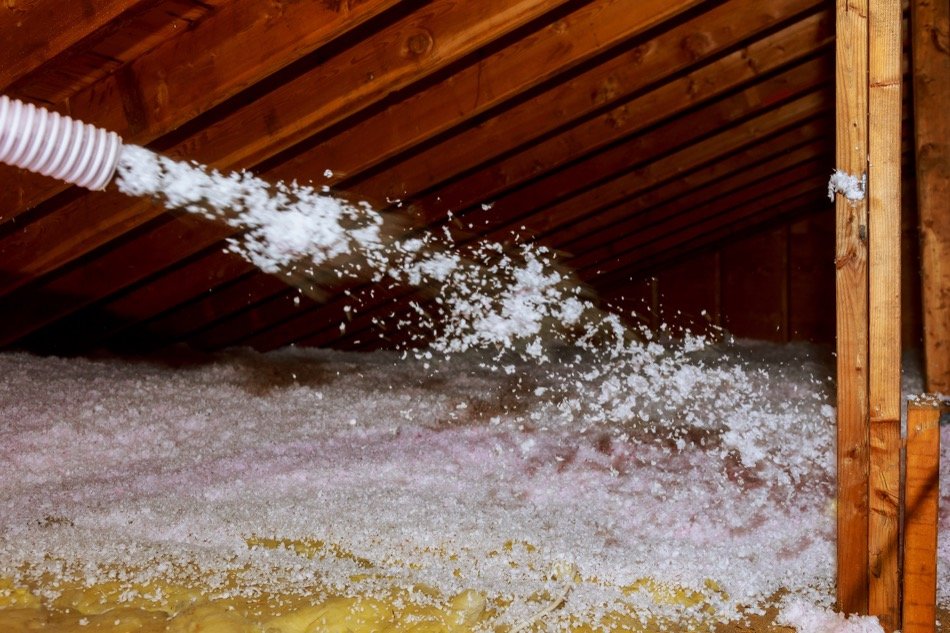How to Re-Insulate Your House to Save Money and Conserve Energy
Posted by Justin Havre on Thursday, July 4th, 2019 at 7:05am.
 Providing shelter from the storm is more than just a catchy phrase when it comes to enjoying the benefits of a Westridge CA home and hearth. But if your home is drafty in the winter or overly warm during the summer months, it might benefit from additional insulation. It's entirely possible to boost the R-rating of attic and wall insulation. Additional benefits are a higher comfort quotient and lower utility bills. Older homes typically had less insulation in walls and attics than is required under current building codes, but modern options can remedy that situation.
Providing shelter from the storm is more than just a catchy phrase when it comes to enjoying the benefits of a Westridge CA home and hearth. But if your home is drafty in the winter or overly warm during the summer months, it might benefit from additional insulation. It's entirely possible to boost the R-rating of attic and wall insulation. Additional benefits are a higher comfort quotient and lower utility bills. Older homes typically had less insulation in walls and attics than is required under current building codes, but modern options can remedy that situation.
Adding Wall Insulation
The ideal time to add insulation is during a renovation project on an older home. If there are already walls and ceilings open as part of a home addition, kitchen or bathroom remodel, or exterior siding replacement, the time is ideal—and cost effective—to add new batt or blown-in insulation.
Various types of modern insulation return different R-ratings, the common measurement used to express the effective protection against cold. The higher the R-rating, the cozier an interior will be in cold weather. Added insulation will also keep a home more comfortable during the heat of summer. Homeowners may be limited in the choices available to retrofit an older home, but it's worth looking at the options:
Batt Insulation
Designed to fit between the studs of a wall, or slide easily between the ceiling joists, fluffy batts are typically of fiberglass sandwiched between layers of paper. Batts may also be made of real or synthetic wool, or shredded cotton and denim scraps. Price and efficiency varies.
Blown-in or Loose Fill Insulation
This is the common installation method when walls cannot be opened completely to allow the stapling of batt insulation to structural timbers. Blown-in insulation generally required a trained, professional crew; care must be taken not to overfill the cavity, but it is an effective solution for older homes, and can be accomplished by drilling holes in exterior or interior walls that are subsequently patched and refinished. It is also an effective way to add insulation to attic ceilings. Fiberglass, cellulose and mineral wool are commonly used.
Rigid Panels
Insulating panels are a modern option when replacing a home's exterior siding. Made from extruded polystyrene or rigid foam of varying thickness, panels are applied directly against the studs; they form an effective vapor barrier and prevent drafts as well. Siding material of choice is applied over the insulating panels. Rigid insulation is also used on interior walls during new construction, but is not typically added during renovation.
Sprayed-On Fibre
Insulation may also be installed with a spray gun, but this is another method that requires professional handling. It is considered a variation of loose fill, but is sprayed between the studs and dries in place, preventing eventual settling and the possibility of cavities forming within the walls. It must be done prior to installation of drywall or plaster, and it must dry sufficiently before finished wall treatments are applied.
Choosing the Right Method and Material
Several factors influence decision-making. A homeowner without specific knowledge should consult with a specialist to determine how much added insulation is necessary or advisable before trying a DIY project.. Feasibility and cost are the primary concerns, but aesthetics can play into a decision, as well as long-term performance expectations.
Owners can also help to eliminate drafts and create cozier interiors, both in summer and winter, by looking at more efficient windows and doors, sealing around wall and roof penetrations, and installing proper window coverings to help regulate interior temperatures.
Boosting a home's R-rating will typically result in lower utility bills as well, and added benefit of additional insulation.
